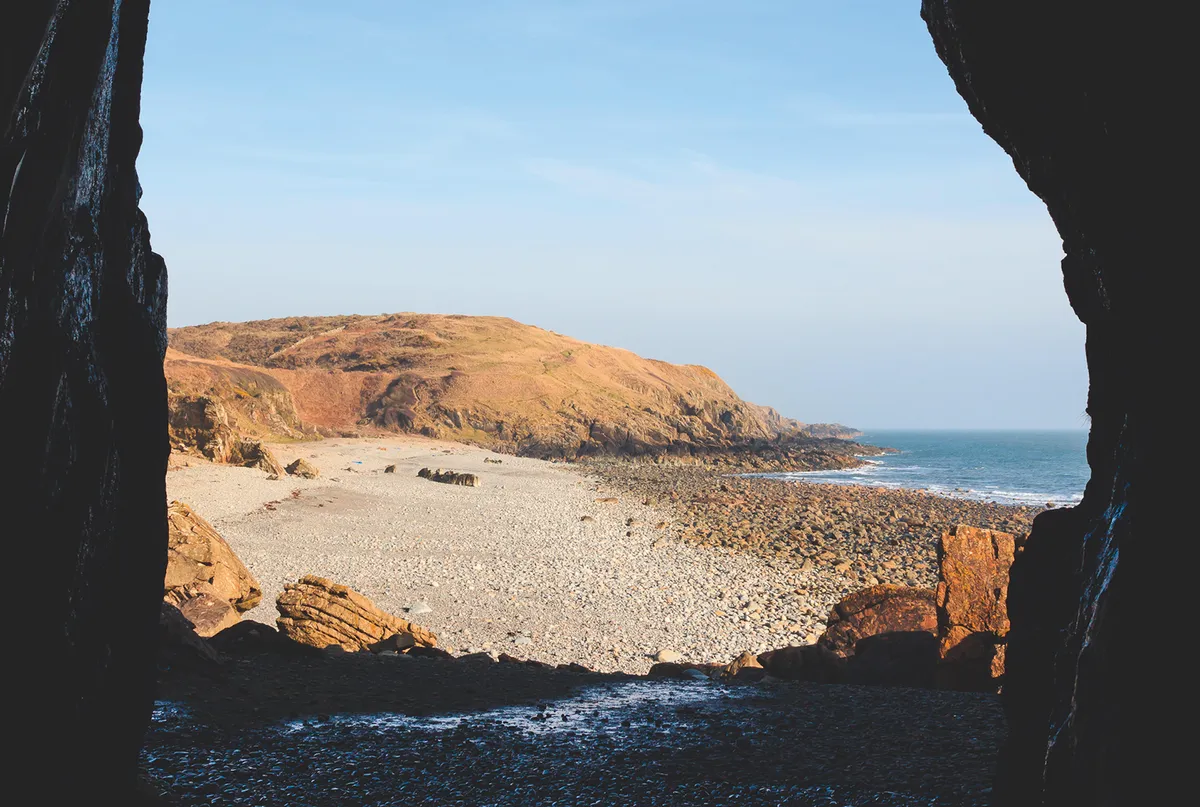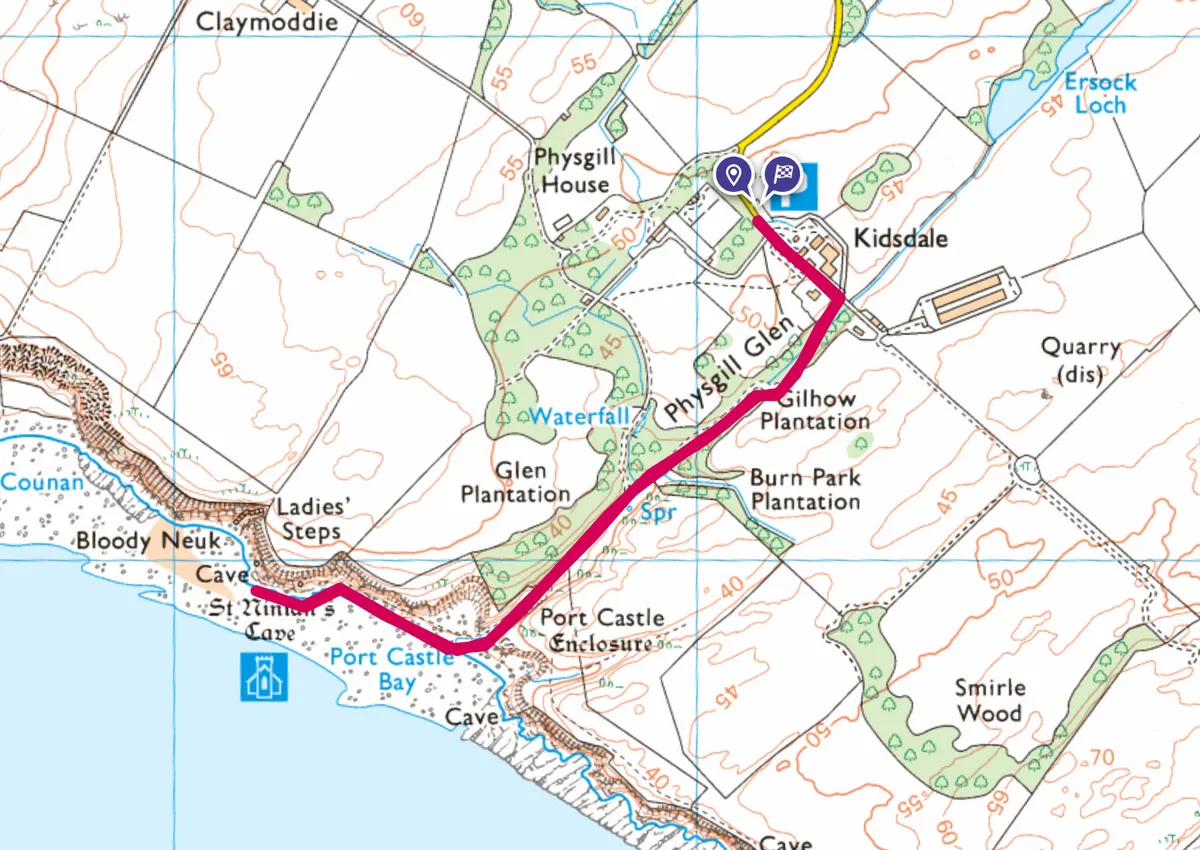A wind-wrapped Port Castle Bay, on the south-western shores of the Machars peninsula in Dumfries and Galloway, is an ideal spot to embrace nature and follow in the footsteps of pilgrims – old and modern – to an adorned cave.
To reach the secluded, stony site, drive south from Whithorn and follow the Historic Scotland road signs for St Ninian’s Cave, down a tall beech-lined avenue to a car park.

St Ninian's Cave and Port Castle Bay walk
2 miles/3.3km | 1–1.5 hours | Easy
1. Down the glen
From the car park, a rough, one-mile path descends wooded Physgill Glen towards the coast, passing berry-laden holly trees.
2. Ocean winds
Where the path divides, take the higher (less muddy) option to cross the burn. Walk easily on through this peaceful and sheltered setting. If the wind is howling you will feel it instantly where the glen meets Port Castle Bay.
Make your way right, somewhat awkwardly, over rounded stones with views out to the Isle of Man. It is an atmospheric place with its crashing waves, wave-cut platforms, and the shrill call of oystercatchers. You will spy a natural angle in the cliff rocks at the far end of the beach: Saint Ninian’s Cave.
3. Into the cave
“Tradition holds that this seaside cave… was the hermitage, or hideaway, of St Ninian,” says Historic Scotland. “Although the association is impossible to verify, it is quite possible that the cave functioned as a retreat from the monastery at Whithorn, a few miles to the north.”
One of the earliest Christian sites in Scotland, Whithorn is said to have been founded by St Ninian in the 5th or 6th century. But there is much uncertainty about the identity of this saint. Whithorn Priory and Museum offer information about the saint and the area’s claims as the cradle of Christianity in Scotland.

As you get closer, the cave becomes less impressive. It is a recess of some four metres, though it is believed it was much larger prior to a rockfall. Note that it may not be possible to reach it if there is a very high tide.
Roughly carved crosses can be seen – most of them believed to have been made by pilgrims in the eighth and ninth centuries to commemorate their visit. From the vantage point inside the cave, which featured in the cult film The Wicker Man, one can watch cormorants and guillemots. Grey seals may be seen, too, and bottlenose and common dolphins ply the sea, along with minke whales.
St Ninian's Cave and Port Castle Bay map
Saint Ninian's Cave walking route and map

